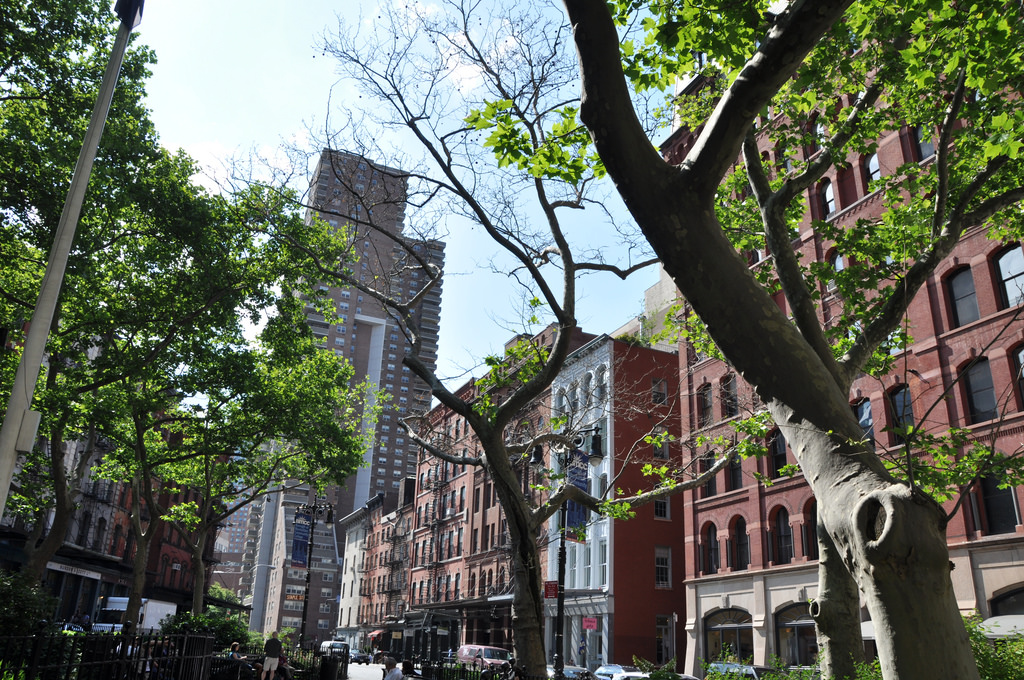Photo image courtesy of Flickr user Veni
What do trees have to do with health?
According to The Nature Conservancy, quite a bit.
Not only do trees clean the air, cool down a city, and provide added visual aids to the concrete and steel of a city, they also deliver mental and physical benefits like preventing breathing problems as well.
To those of us who live here, NYC and the environment aren’t necessarily synonymous. Ask any New Yorker, and they’ll list off the parks as their main access to nature.
But it’s not just a New York issue. “Despite overwhelming evidence testifying to the environmental and health benefits of urban trees, their presence is declining in cities across the U.S,” writes Eillie Anzilotti.
So what is the Big Apple doing about it?
We looked into the data being collected across NYC agencies to find out.
This data resulted in three interactive maps you’ll see below, comparing income, asthma ER visits, and particulate matter to the new tree plantings as part of the Million Trees Initiative. To see how NYC stands, we focused on these three topics as they depict different aspects of the research, and expand upon health, income inequality, and environmentalism. We separated the maps out to show the trees in comparison to two health indicators as well as income in more accessible formats for cross comparison.
The most obvious results show that there are more trees were planted in certain neighborhoods, particularly in the Bronx and the Upper parts of Manhattan. Many of these areas are in the lower range of household income. However, large swaths of Brooklyn are still left unattended.
On the flip side, Manhattan and areas with more skyscrapers and industrial foci have heightened levels of particulate matter in the air, one of the leading causes of respiratory issues. Many of the new trees were planted in the areas most affected by high ranges of PM, however lower Manhattan was left unattended. We wondered if this was due to building density and would like to explore this in future research. For asthma, new tree density correlated to higher levels of ER visits.
To the right you’ll find a map from NYC Parks of tree density across the boroughs that we were unable to add to the maps but that we wanted to include for transparency. The tree density includes all old and newly planted trees. As you can see, trees are not evenly distributed, even by neighborhood.
A good thing that might not be evident from the maps? NYC has over half a million trees, with the majority in “good” condition as noted in the last tree census. The Park notes that “New York City’s street trees would fill approximately 2,000 acres, or an area 2½ times the size of Central Park.”
So while NYC might be new to using trees for public health, at least the city is on its way to greener lanes.
Things to note:
Also, the particulate matter data is from 2016, while the million trees data is from 2015. As a result this relationship is hard to compare as there has not been enough time for the trees to have any effect. Yet we felt it was still important to show how it fared beforehand and how these plantings might lead to greater effects in the future.
Lastly, asthma isn’t just environmental, and can be caused from a wide variety of things. However we thought it would be interesting to show as an influence between air quality and health that people are familiar with.

